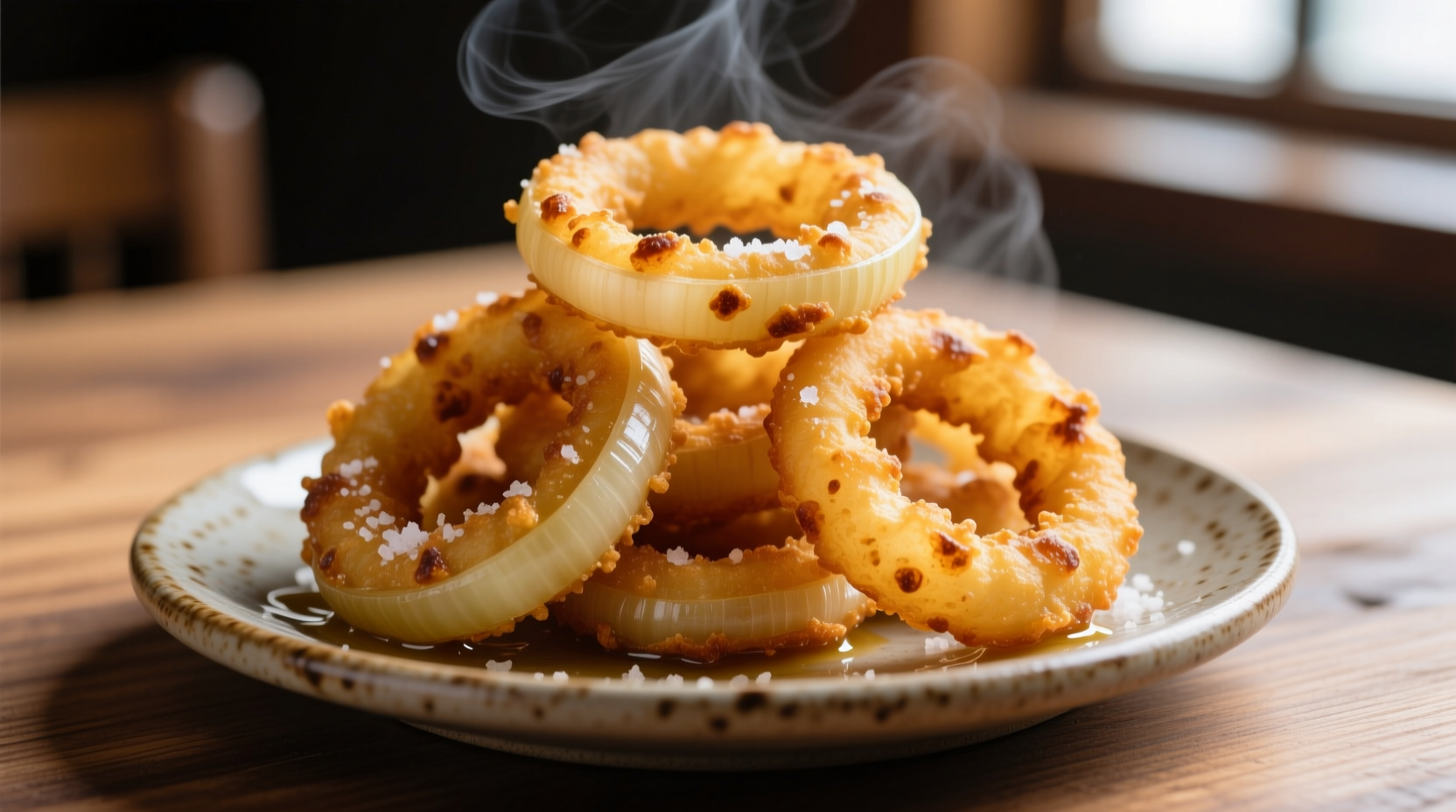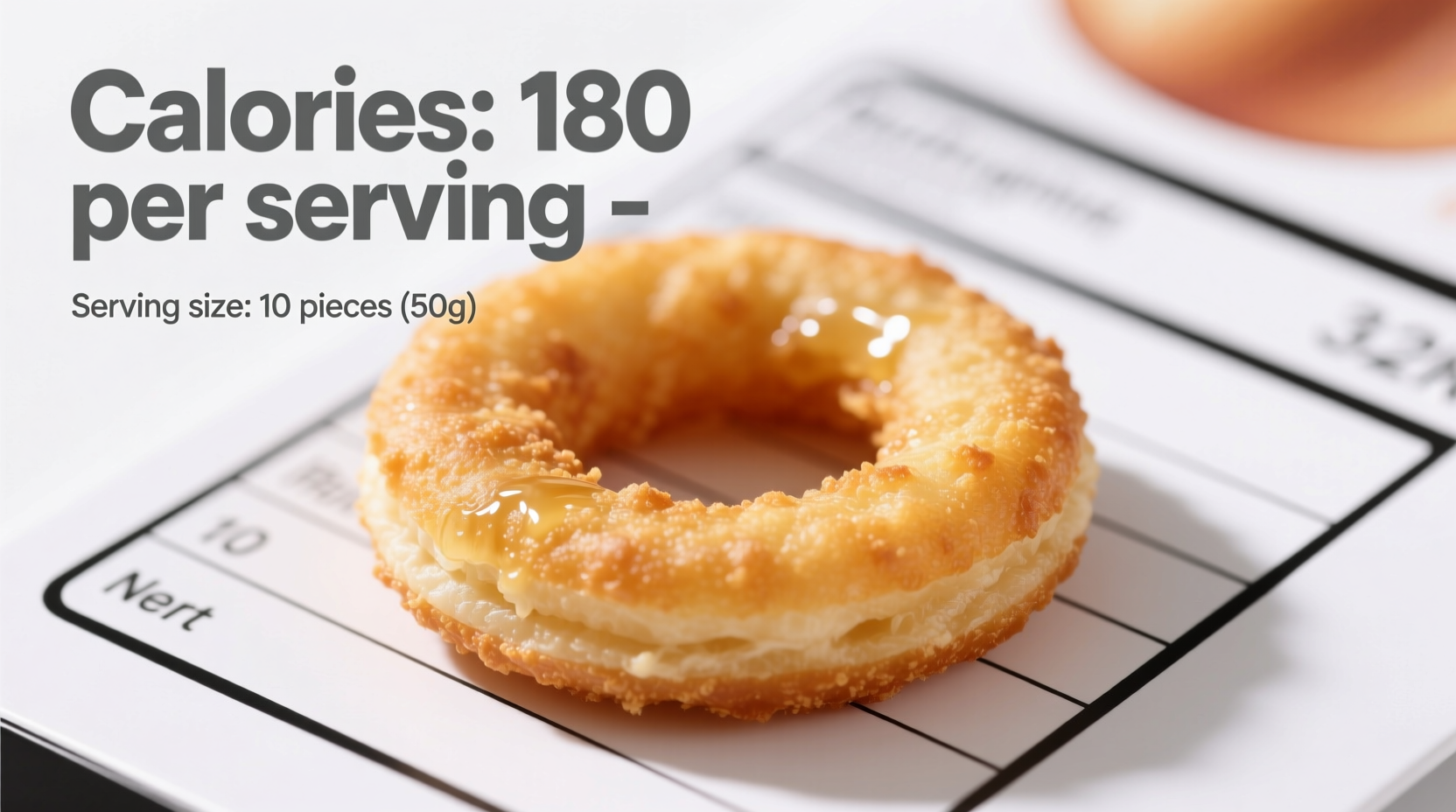A typical serving of restaurant-style onion rings (about 3.5 ounces or 100 grams) contains approximately 350-400 calories, with 15-20 grams of fat and 40-50 grams of carbohydrates. Homemade versions can range from 250-500 calories depending on preparation method, batter thickness, and oil absorption during frying.
Ever wonder exactly how many calories are hiding in that crispy, golden basket of onion rings? Whether you're tracking your daily intake or making smarter menu choices, understanding the real nutritional impact of this popular side dish matters. This guide delivers precise calorie information from authoritative sources, breaks down what affects those numbers, and shows you how to enjoy onion rings without blowing your dietary goals.
What Determines Onion Ring Calorie Counts?
Onion rings aren't just onions and oil—they're a complex interplay of ingredients and preparation methods that dramatically impact their nutritional profile. The calorie count varies significantly based on several key factors that most nutrition labels don't fully explain.
| Preparation Method | Calories per 100g | Fat Content | Carbohydrates |
|---|---|---|---|
| Deep-fried restaurant style | 380-420 | 18-22g | 45-50g |
| Air-fried homemade | 220-260 | 8-10g | 35-40g |
| Baked with minimal oil | 180-220 | 5-7g | 30-35g |
| Fast food chain average | 400-450 | 20-25g | 48-55g |
This comparison, based on USDA FoodData Central measurements (USDA FoodData Central), reveals why preparation method matters more than you might think. Restaurant versions absorb significantly more oil during deep frying, while air-fried or baked alternatives can cut calories by nearly half without sacrificing that satisfying crunch.
How Serving Size Changes Everything
That seemingly innocent side order often contains multiple servings. A standard restaurant portion (about 4 ounces or 113 grams) typically delivers 450-550 calories—equivalent to a full meal for many people watching their intake. The problem compounds when you consider common accompaniments:
- Dipping sauces add 100-200+ extra calories
- Larger "value" portions can reach 800+ calories
- Combo meals with onion rings often exceed 1,000 calories
According to CDC dietary guidelines, a typical adult should consume 1,600-2,400 calories daily. That means a single serving of restaurant onion rings could represent 20-30% of your entire daily allowance—before you even consider the main course.

Practical Strategies for Smarter Consumption
Complete deprivation rarely works. Instead, implement these chef-tested techniques to enjoy onion rings while staying within your calorie goals:
Portion Control Tactics
Order a kids' portion (typically 2-3 ounces) for 250-300 calories, or split a regular order with a dining companion. At home, measure your batter and onion quantities to control portions before frying.
Preparation Method Swaps
As shown in our comparison table, air frying reduces oil absorption by 60% compared to deep frying. Try this professional technique: dip onions in egg wash, then in panko breadcrumbs for maximum crispiness with minimal oil.
Smart Pairing Principles
Balance your meal by pairing smaller portions of onion rings with high-protein, low-calorie main dishes. A 4-ounce grilled chicken breast (180 calories) with a half-serving of onion rings creates a more nutritionally balanced meal than pairing with fried foods.
When Onion Rings Fit (and When They Don't)
Understanding context boundaries helps determine whether onion rings align with your dietary goals. They can work in specific scenarios:
- Active individuals: Those with high energy expenditure may accommodate occasional onion rings
- Post-workout: The carbohydrates can aid recovery when paired with protein
- Social occasions: Mindful enjoyment as part of balanced eating patterns
However, they become problematic when:
- Consumed daily as a regular side dish
- Paired with other high-fat, high-calorie menu items
- Used as a primary vegetable source rather than occasional treat
Better Alternatives for Crispy Vegetable Cravings
When you want that satisfying crunch without the calorie overload, consider these alternatives that deliver similar textures with better nutritional profiles:
- Roasted sweet potato wedges: 150 calories per serving with vitamin A
- Zucchini chips: 100 calories with minimal oil absorption
- Spiced roasted chickpeas: 130 calories with protein and fiber
- Grilled portobello mushrooms: 50 calories with meaty texture
These options provide the textural satisfaction you crave while delivering more nutrients per calorie—a crucial consideration for anyone tracking their intake.
Reading Nutrition Labels Like a Pro
When evaluating packaged frozen onion rings, look beyond the basic calorie count. Check for:
- Trans fat content (avoid anything with "partially hydrogenated oils")
- Serving size versus container size
- Added sugars in the batter
- Sodium levels (often 300-500mg per serving)
The Academy of Nutrition and Dietetics recommends comparing products by calories per ounce rather than per serving, as serving sizes vary dramatically between brands. This gives you a more accurate picture of which product delivers the best value for your calorie budget.











 浙公网安备
33010002000092号
浙公网安备
33010002000092号 浙B2-20120091-4
浙B2-20120091-4